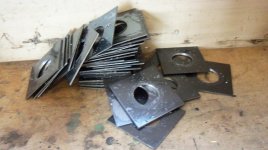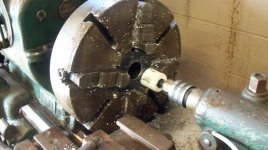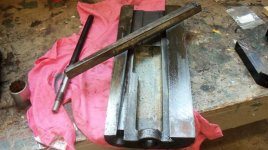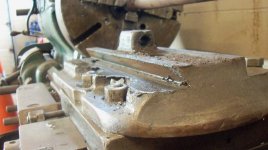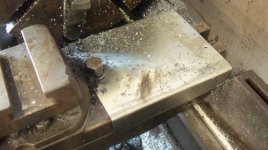Andy Pacemaker
Plastic
- Joined
- Jan 13, 2014
- Location
- Halifax, Nova Scotia, Canada
Hello Everyone,
This is my first post on the forums here at Practical Machinist. And I'm fairly new to machining concepts. So If I spit out anything that is way off base, dont hesitate to correct me. I'm looking forward to learning.
So my main piece of equipment is an 18" American, 8 speed, gear head, as the post title suggests. I picked the machine up for $500 from a guy who was going to scrap it! Lucky for it, I have an appreciation for old gear like this.
After only a few hours of labour I had a 3 hp motor mounted up top, changed out the gear water with gear oil and got everything freed up for operation. The ways seem to be in pretty good shape for its age. All the power feeds and lead screw even worked. So overall I am very happy with the machine.
But there are a few little problems.
- The chuck is stuck.
- The spindle bearings are pretty loose
- The transmission seems to drag the motor down in certain gears
As for the chuck. I cant seem to figure out how to safely hold the spindle in place for chuck removal. I tried sticking a bar into the bull wheel through the oil fill hole. But It is so stuck I'm afraid the gear will snap under the torque from a big bar in the chuck. Anyone know how to safely keep the spindle still in these machines for chuck removal?
As for the bearings. I'm wondering if anyone on here has ever converted one of these machines to tapered roller bearings on the spindle?
As for the transmission. I put about 6 litres of 80-90 gear oil in. I've been reading and am lead to believe that it is too thick. So this could be causing some of the "dragging down"
Does anyone knows what type of oil is supposed to be in these gearboxes?
Also does anyone know what size the spindle taper of this machine would be in the headstock?
This is my first post on the forums here at Practical Machinist. And I'm fairly new to machining concepts. So If I spit out anything that is way off base, dont hesitate to correct me. I'm looking forward to learning.
So my main piece of equipment is an 18" American, 8 speed, gear head, as the post title suggests. I picked the machine up for $500 from a guy who was going to scrap it! Lucky for it, I have an appreciation for old gear like this.
After only a few hours of labour I had a 3 hp motor mounted up top, changed out the gear water with gear oil and got everything freed up for operation. The ways seem to be in pretty good shape for its age. All the power feeds and lead screw even worked. So overall I am very happy with the machine.
But there are a few little problems.
- The chuck is stuck.
- The spindle bearings are pretty loose
- The transmission seems to drag the motor down in certain gears
As for the chuck. I cant seem to figure out how to safely hold the spindle in place for chuck removal. I tried sticking a bar into the bull wheel through the oil fill hole. But It is so stuck I'm afraid the gear will snap under the torque from a big bar in the chuck. Anyone know how to safely keep the spindle still in these machines for chuck removal?
As for the bearings. I'm wondering if anyone on here has ever converted one of these machines to tapered roller bearings on the spindle?
As for the transmission. I put about 6 litres of 80-90 gear oil in. I've been reading and am lead to believe that it is too thick. So this could be causing some of the "dragging down"
Does anyone knows what type of oil is supposed to be in these gearboxes?
Also does anyone know what size the spindle taper of this machine would be in the headstock?





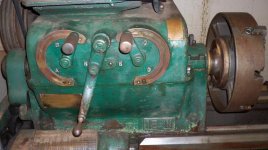
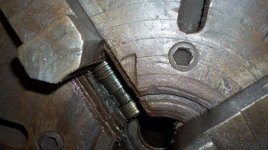

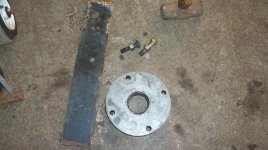


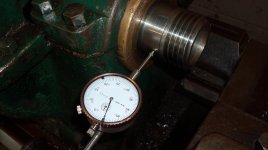




 The partial turn could be due to thread backlash- I have a poorly fit backplate on the threaded spindle of my dividing head which acts like that if I'm milling on a tangent- I literally have to clamp the chuck to an angle plate to stop the chuck from moving around.
The partial turn could be due to thread backlash- I have a poorly fit backplate on the threaded spindle of my dividing head which acts like that if I'm milling on a tangent- I literally have to clamp the chuck to an angle plate to stop the chuck from moving around.